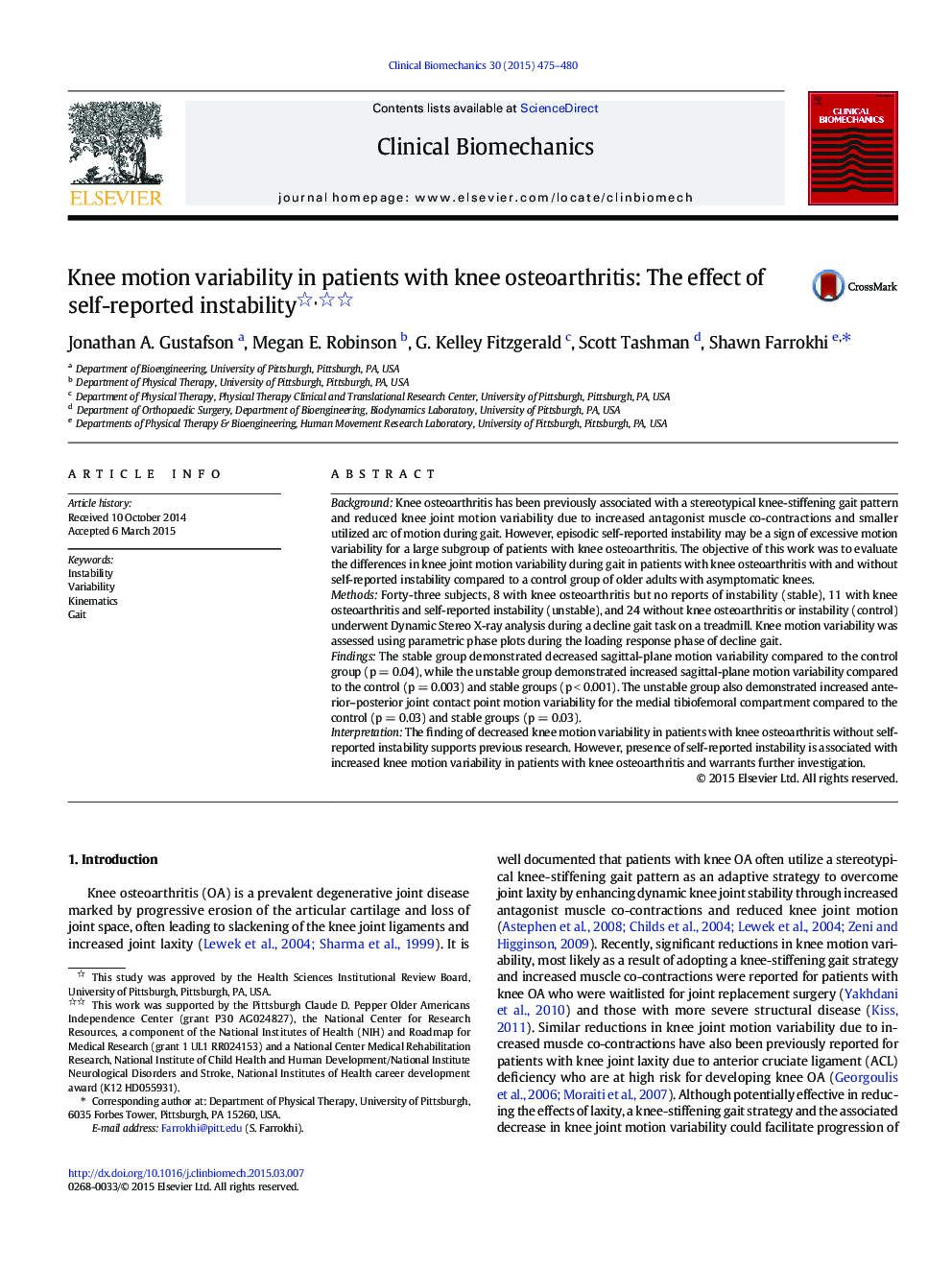| کد مقاله | کد نشریه | سال انتشار | مقاله انگلیسی | نسخه تمام متن |
|---|---|---|---|---|
| 6204796 | 1264918 | 2015 | 6 صفحه PDF | دانلود رایگان |
- Knee joint motion variability was studied in patients with knee osteoarthritis.
- Comparisons were made with a group of older adults without knee osteoarthritis.
- Patients without self-reported instability had smaller flexion motion variability.
- Self-reported instability was associated with higher flexion motion variability.
- Self-reported instability was associated with more variable joint contact motion.
BackgroundKnee osteoarthritis has been previously associated with a stereotypical knee-stiffening gait pattern and reduced knee joint motion variability due to increased antagonist muscle co-contractions and smaller utilized arc of motion during gait. However, episodic self-reported instability may be a sign of excessive motion variability for a large subgroup of patients with knee osteoarthritis. The objective of this work was to evaluate the differences in knee joint motion variability during gait in patients with knee osteoarthritis with and without self-reported instability compared to a control group of older adults with asymptomatic knees.MethodsForty-three subjects, 8 with knee osteoarthritis but no reports of instability (stable), 11 with knee osteoarthritis and self-reported instability (unstable), and 24 without knee osteoarthritis or instability (control) underwent Dynamic Stereo X-ray analysis during a decline gait task on a treadmill. Knee motion variability was assessed using parametric phase plots during the loading response phase of decline gait.FindingsThe stable group demonstrated decreased sagittal-plane motion variability compared to the control group (p = 0.04), while the unstable group demonstrated increased sagittal-plane motion variability compared to the control (p = 0.003) and stable groups (p < 0.001). The unstable group also demonstrated increased anterior-posterior joint contact point motion variability for the medial tibiofemoral compartment compared to the control (p = 0.03) and stable groups (p = 0.03).InterpretationThe finding of decreased knee motion variability in patients with knee osteoarthritis without self-reported instability supports previous research. However, presence of self-reported instability is associated with increased knee motion variability in patients with knee osteoarthritis and warrants further investigation.
Journal: Clinical Biomechanics - Volume 30, Issue 5, June 2015, Pages 475-480
